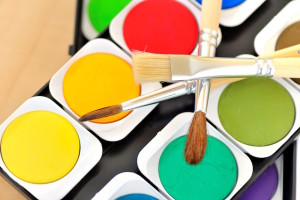
In the early 1980’s Howard Gardner introduced the concept of multiple intelligences to contrast with the predominant verbal and math skills necessary to do academically well on tests and school grading.
When we look at the whole child in a multi-faceted manner, we have a valuable tool that can help us aid a child’s development. The concept of multiple intelligences gives us another way to consider the child’s interests and activities in the context of the child’s entire life, not just how that child is doing in school.
Gardner has identified eight basic types of intelligence as follows:
linguistic, logical and mathematical, spatial, musical, kinesthetic, interpersonal, intrapersonal and naturalist.
When we can look at our children’s strengths and natural intelligence, we can then help our children strengthen their gifts and use these strengths to bridge weak skills. In helping our children develop their natural strengths, we will also help them develop other traits such as persistence, enthusiasm, impulse control and goal awareness, all of which may count more toward success in life than native ability.
If we see a child who loves to sing or listen to music, but is doing poorly in reading, we might introduce music combined with reading to use the child’s musical talents to bolster a weakness. Reading the lyrics of a favorite song while singing along may be the key to help this struggling reader.
For the child who does poorly in math but loves to move, perhaps we can make a chalk number line and have the child walk or hop to add or subtract, and even multiply. Five plus three becomes a movement of starting on the five and moving three numbers away from the zero. The child discovers that he or she is now on the eight. For subtraction, the child moves toward the zero on the number line. Seven minus three leaves us at the four. Taking three hops three times gets us to nine. Using movement and numbers together can create success for this child.
For the child who enjoys interacting with other people (which is sometimes seen as talking and not getting one’s work done, or keeping others from working), we should help the child learn to draw on other strengths besides interpersonal intelligence to develop persistence, enthusiasm, impulse control and goal awareness.
The child with the gift of gab and the love of animals might become an expert on snakes and present oral presentations to each class in the school and larger community.
Perhaps the child who loves to dance, but has weak skills in history, can create a dance performance about the signing of the Declaration of Independence.
The child with athletic gifts in soccer, yet who is struggling with reading, can be directed to reading and writing materials pertaining to soccer.
Using the idea of multiple intelligences along with the concept of bolstering weakness with strengths can give us a tool to help each child develop his or her unique combination of gifts for the world.

Gardner has added a ninth intelligence, existential intelligence,that is about the ability to pose and ponder questions about life, death and ultimate realities. I omitted it from this article for simplicity’s sake.
I taught music in elementary school. Taught states of US through a song, math problems with
rhythm, spelling through rhythms, etc. Love your emails. E
Evelyn,
Thank you for sharing your experience. Great teachers use multiple intelligences whether they know it or not.